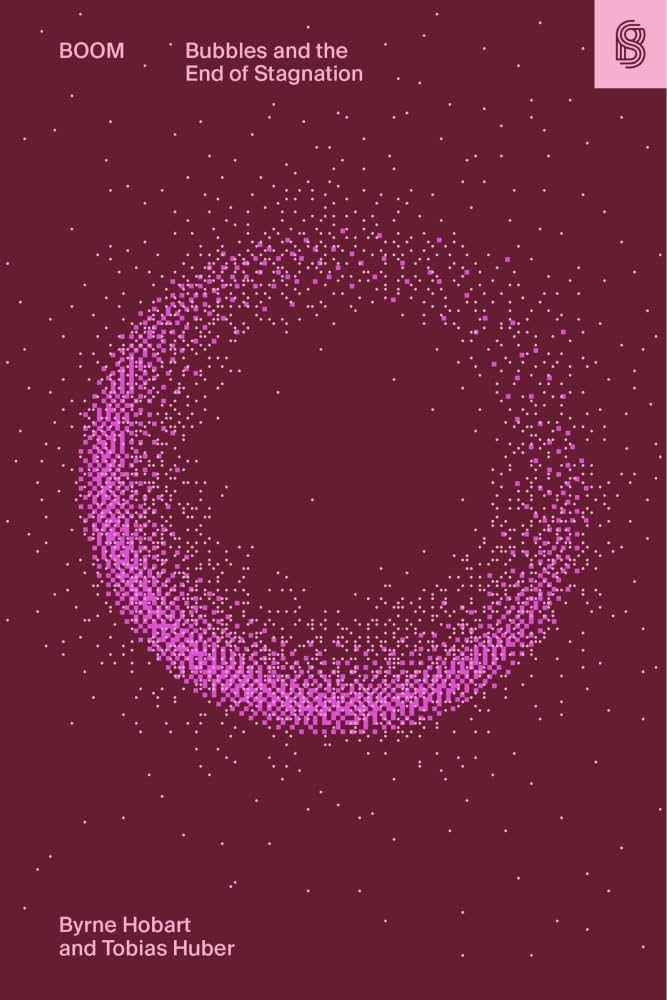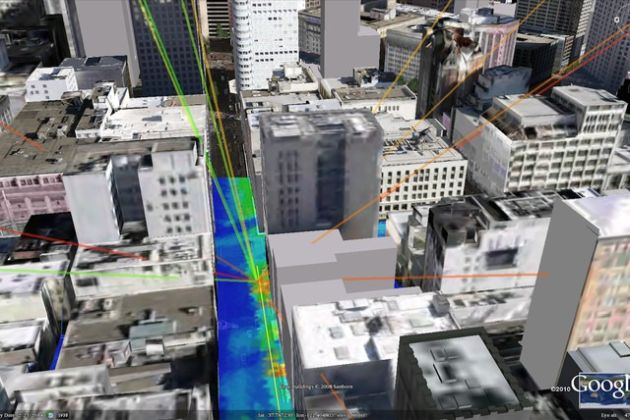Traders look at the 1 at the start of the equation and treat trading as a profitable activity. Engineers look at the 0 at the end of the equation and dismiss trading as a zero sum game.
John Maynard Keynes won the Nobel Prize in Economics for proposing digging a road and filling it back as an economic stimulus. Engineers would scoff at the activity as zero sum game but the strategy is widely credited with pulling the world out of the Great Depression.
Under the Sale and Lease Back model used in the commercial real estate industry, a company sells a property it owns (e.g. office building, warehouse, or retail space) to an investor or real estate firm, leases back the property from the new owner under a long-term lease agreement, and continues to use the property while paying monthly or periodic lease payments. There’s tons of benefits from SLB for property owners and real estate firms but engineers would think of it as a zero sum game.
I could go on and on but my drift should be clear: Many profitable pursuits in real world come across as zero sum game in natural sciences. This is because there’s a big difference in the mindsets of the practitioners of the two fields.
In my opinion, this disconnect is caused by at least three fundamental differences in the nature of cause-effect relationships between natural sciences (as characterized by engineering and STEM) and the real world (as characterized by economics, consumer behavior, finance, marketing, and business).
1. Cause Effect Looping
Most cause effect relationships are unidirectional in natural sciences but bidirectional in the real world. Put another way, the arrow of causality rarely reverses in natural sciences but frequently loops back in real life.
In the famous F=ma equation in physics, force is the cause, acceleration is the effect. That does not change between today and tomorrow. If you strike a ball with mass ‘m’ with a force of ‘F’, the ball will accelerate at F/m at all times.
Now, let’s take the case of a central bank using interest rate as a tool to control inflation. Cause and effect loop back into each other all the time.
- Interest Rates Affect Inflation: When interest rates are raised, borrowing becomes more expensive, which can reduce consumer spending and business investment. This, in turn, reduces demand for goods and services, slowing inflation or even causing staglation and deflation in extreme situations.
- Inflation Affects Interest Rates: On the other hand, when inflation rises, central banks are often prompted to increase interest rates to curb it. If inflation gets too high, they might raise rates to cool down the economy and stabilize prices.
Interest rate can be the cause in one month and effect, in another. Inflation can be the effect in one month and cause, in another.
There are many more examples of cause-effect looping in the real world. I prompted ChatGPT for a few:
Q: When I studied engineering, I noticed that all cause-effect relationships in physical sciences are unidirectional and constant in time. That is, if Y is a function of X, it means that X is the independent variable and Y is the dependent variable, and this status does not change with time. However, when I studied MBA, I did a course on Econometrics, in which I noticed that many cause-effect relationships are bidirectional and change with time. Can you give an example of such a relationship from the world of economics, business, or marketing?
This is what I got:
A: Here are a few examples of bidirectional and time-dependent cause-effect relationships in economics, business, and marketing:
- Advertising Spend and Sales
- Consumer Confidence and Economic Growth
- Price and Demand (inelastic markets)
- Employee Satisfaction and Company Performance
- Innovation and Market Share
Click here to know more about how cause and effect loop into each other in these examples.
Talking of the Econometrics course in my MBA, it was probably the toughest course in my academic career. I was familiar with differential equations and difference equations from my maths courses at IIT Bombay but Econometrics invoked differentio-difference, integro-difference and other advanced equations in calculus.
2. Transient v. Steady State
In most natural science phenomena, cause is translated into effect in near realtime. Steady state is attained almost instantly and very little time is spent in the transient state. To continue with the F=ma example from above, a ball of mass ‘m’ struck with a bat with force ‘F’ instantly attains the acceleration of ‘F/m’ (see footnote 1).
This is not the case with real world phenomena. To continue with the interest rate-inflation example from above, inflation does not respond instantly to a change in interest rate. The trajectory of interest rate goes through a transient state for weeks, if not months, before settling down to the intended rate of inflation at steady state. During the transient state, anything can happen to the economy, so it’s not enough for the central bank to confine its intervention to steady state inflation.
Accordingly, the natural science mindset tends to ignore cause-effect behavior in the transient state whereas real world methodologies factor it in. Put differently, STEM practitioners don’t attach any “time value” to effect in the cause-effect relationship. On the other hand, time value is crucial in the real world e.g. much of banking and financial services business is about the time value of money.
I can think of two examples to illustrate this point:
I joined a software product company in the mid-1990s. Although IT services was already mainstream by then, this company got into IT products on the the thesis that, as offshoring of IT services increases, wages of offshore workers will rise and attain parity with wages of onsite workers, so there will be no labor cost arbitrage between offshore and onsite work, ergo IT services will die. The engineer-run company didn’t attach any time value to its founding premise. While wages of offshore IT workers certainly increased, there’s a substantial labor cost arbitrage between offshore and onsite even thirty years later and, far from perishing, IT services has exploded from less than $10 billion revenues at the time to over $250 billion now and created massive wealth along the way (whereas revenues of Indian IT products companies still haven’t crossed the $10 billion mark when I last checked).
When I entered the S/W industry, no one thought IT labor cost arbitrage would last this long! pic.twitter.com/arETi0pFp3
— GTM360 (@GTM360) October 20, 2015
Mention bubble to a STEM practitioner and she will think of a soap bubble and picture the entire process of its formation, growth and bursting happening instantly whereas a businessman will think of an asset bubble and know that a finite amount of time will elapse between its three phases. More in this in a bit.
3. Time Lag
In Keynesian theory, digging the road happens at one point in time whereas filling it back happens at another point in time. Each of the two activities has its own effects that don’t cancel each other out. Therefore they produce a net positive effect although they seem like a zero sum game to an engineer. Whereas, in F=ma, acceleration happens as soon as a force is applied, so there’s no passage of time to cause an upside (or downside).
The aforementioned differences in natural science versus real world mindsets manifest themselves in everyday world in many areas. One of them is in people’s take on bubbles.
Almost everybody I’ve talked to thinks bubbles are bad. And it’s not only the Avg Joe or Avg Jane (aka J6P): Even the high and mighty have made their share of gaffes. For example, Bob Metcalfe predicted that the Internet had become a bubble in 1995:
I predict the Internet will catastrophically collapse in 1996.
For the uninitiated, Robert “Bob” Melancton Metcalfe co-invented Ethernet, co-founded 3Com, and formulated Metcalfe’s law.
In How Do Founders Become Rich When Their Startups Don’t Make Profits?, I speculated why asset bubbles never stop forming:
Bubbles don’t burst overnight. Before reaching steady state – and bursting – bubbles go through a transient phase, when they grow and lot of people make a lot of money. Quite often, the transient phase can last years if not a decade. While all bubbles burst at steady state, they end badly only for the people who’re caught holding the parcel when the music stops at the end. For many others who make money by passing the parcel around while the music kept playing for years, bubbles prove to be lucrative. That’s why, even though so many bubbles have burst in the past, that has never stopped new bubbles from forming in the future.
That was four years ago.
In his new book Boom, Byrne Hobart makes the case that bubbles are good:
Not all of them, not always right away, and not without a lot of waste and mismanagement along the way. But, overall, bubbles are good.
Some of the collateral benefits of bubbles include:
- Rapid deployment of home appliances in the 50s triggered by massive electrification drive in the 20s
- Explosion of streaming video in the 2000s on the back of excessive fiber buildouts in the 90s
- Cheap energy now because frackers spent every dollar they could raise in the 2010s.
People forget that these upsides were all caused by bubbles.
Whether you accept this argument or not, remember that:
Anything can happen when it stops, but as long as the music is playing, you gotta get up and dance.
Because, in the real world, if you don’t, your competitor will – get up and dance while the music is playing, that is. On a side note, this is the cardinal principle behind FOMO (Fear Of Missing Out), which proved to the most profitable investing strategy in venture capital during the ZIRP era.
“Missing out on a hot deal is a much bigger mistake in VC than overpaying for the same deal” ~ https://t.co/FE3YQlE14n.
Ergo FOMO / BAAP was the most profitable investing strategy during ZIRP. Time will tell how will it will work in the current HIRP era.— Ketharaman Swaminathan (@s_ketharaman) September 24, 2023
FOOTNOTE(S):
- Due to friction, it might take a few microseconds but, except in rocket science and other highly specialized fields, engineers ignore friction and treat the duration as effectively zero.



